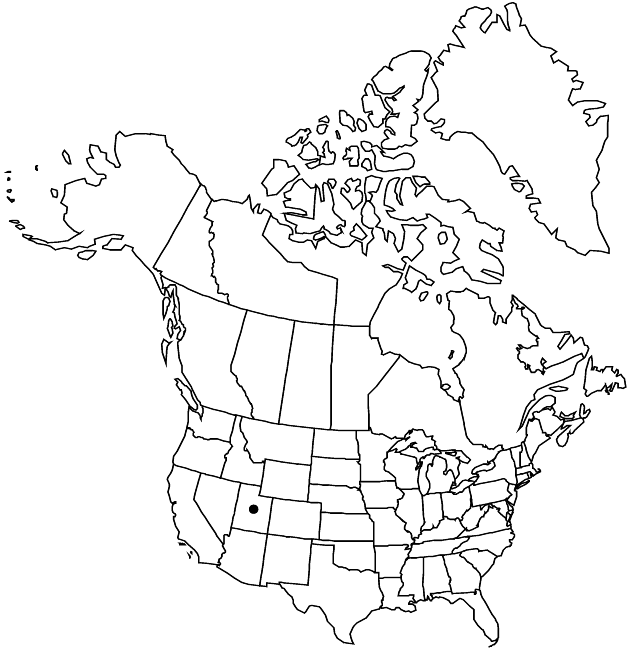Difference between revisions of "Packera castoreus"
in J. T. Kartesz and C. A. Meacham, Synth. N. Amer. Fl., nomencl. innov. 20. 1999.
FNA>Volume Importer |
imported>Volume Importer |
||
| (3 intermediate revisions by 2 users not shown) | |||
| Line 1: | Line 1: | ||
{{Treatment/ID | {{Treatment/ID | ||
|accepted_name=Packera castoreus | |accepted_name=Packera castoreus | ||
| − | |accepted_authority=(S. L. Welsh) Kartesz | + | |accepted_authority=(S. L. Welsh) Kartesz |
|publications={{Treatment/Publication | |publications={{Treatment/Publication | ||
|title=in J. T. Kartesz and C. A. Meacham, Synth. N. Amer. Fl., nomencl. innov. | |title=in J. T. Kartesz and C. A. Meacham, Synth. N. Amer. Fl., nomencl. innov. | ||
|place=20. 1999 | |place=20. 1999 | ||
|year=1999 | |year=1999 | ||
| + | }} | ||
| + | |special_status={{Treatment/ID/Special_status | ||
| + | |code=E | ||
| + | |label=Endemic | ||
}} | }} | ||
|basionyms={{Treatment/ID/Basionym | |basionyms={{Treatment/ID/Basionym | ||
|name=Senecio castoreus | |name=Senecio castoreus | ||
|authority=S. L. Welsh | |authority=S. L. Welsh | ||
| + | |rank=species | ||
|publication_title=Rhodora | |publication_title=Rhodora | ||
|publication_place=95: 399, fig. 6. 1993 | |publication_place=95: 399, fig. 6. 1993 | ||
| Line 38: | Line 43: | ||
-->{{#Taxon: | -->{{#Taxon: | ||
name=Packera castoreus | name=Packera castoreus | ||
| − | + | |authority=(S. L. Welsh) Kartesz | |
| − | |authority=(S. L. Welsh) Kartesz | ||
|rank=species | |rank=species | ||
|parent rank=genus | |parent rank=genus | ||
| Line 52: | Line 56: | ||
|publication title=in J. T. Kartesz and C. A. Meacham, Synth. N. Amer. Fl., nomencl. innov. | |publication title=in J. T. Kartesz and C. A. Meacham, Synth. N. Amer. Fl., nomencl. innov. | ||
|publication year=1999 | |publication year=1999 | ||
| − | |special status= | + | |special status=Endemic |
| − | |source xml=https:// | + | |source xml=https://bitbucket.org/aafc-mbb/fna-data-curation/src/2e0870ddd59836b60bcf96646a41e87ea5a5943a/coarse_grained_fna_xml/V19-20-21/V20_1293.xml |
|tribe=Asteraceae tribe Senecioneae | |tribe=Asteraceae tribe Senecioneae | ||
|genus=Packera | |genus=Packera | ||
Latest revision as of 20:59, 5 November 2020
Perennials, 3–9+ cm; usually fibrous-rooted, sometimes rhizomatous (bases erect or ascending, branched). Stems 1 or 2–3, (white) woolly-tomentose. Basal leaves (and proximal cauline) petiolate; blades obovate to oblanceolate or spatulate, 10–20+ × 5–18 mm, bases tapering, margins entire or crenate (abaxial faces densely tomentose, adaxial glabrescent). Cauline leaves gradually reduced (becoming sessile and bractlike). Heads 1–4+, in corymbiform arrays. Peduncles ebracteate. Calyculi inconspicuous. Phyllaries purple-tinged, 7–10 mm, tomentose (ciliate distally, apices with dense tufts of hairs). Ray florets 0. Disc florets not seen. Cypselae not seen (reported to be glabrous).
Phenology: Flowering late Jul–late Sep.
Habitat: Ridges, spruce-fir communities, igneous soils
Elevation: 3300–3900 m
Discussion
Of conservation concern.
Packera castoreus is known only from relatively few collections from the Tushar Mountains in Beaver and Piute counties. Welsh speculated that it may have some affinities with P. cana and P. werneriifolia.
Selected References
None.
